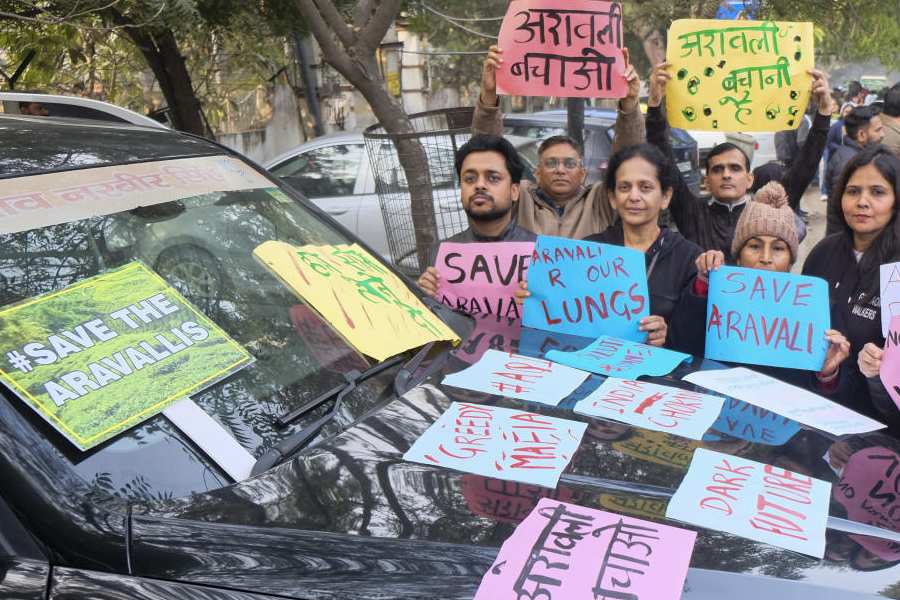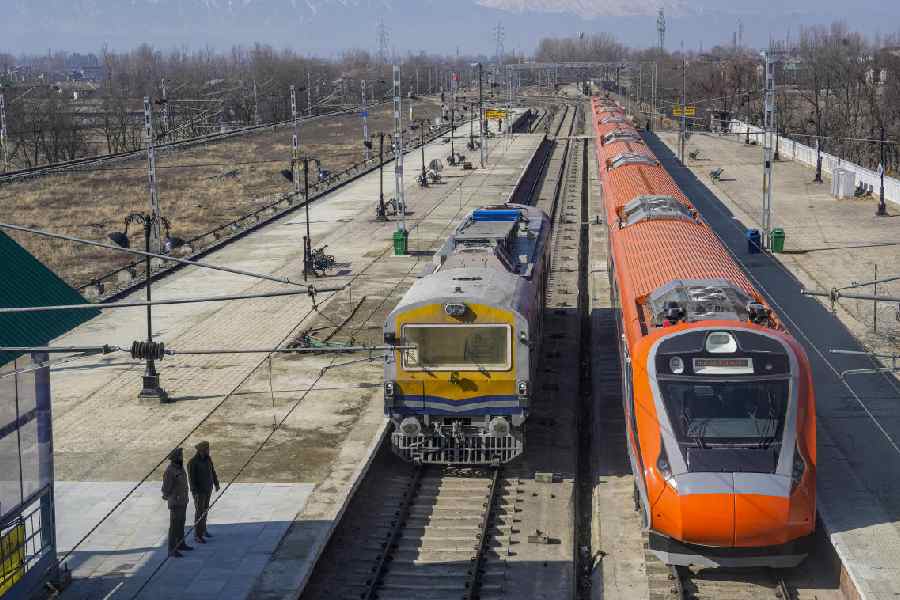.jpg)
An enduring symbol of love had to be pulled down in our neighbourhood on January 17. But another one was erected on January 22. There is hope for humanity yet.
Who says Valentine’s Day is restricted to romantic love? One of our neighbours has decided to uphold the Biblical dictum “Love thy neighbour” by developing a novel idea against a wall. And for once, this wall doesn’t divide.
It’s called the Wall of Kindness. Approaching from the Bidhannagar Municipal School in FE Block, cross the Jaidip Mukherjea tennis academy and take a right turn from the island. Stop your car and look at the wall on the left. Between shacks serving tea, tailor’s and barber’s services is a banner that reads “Wall of Kindness”.
Underneath are clotheslines. Anyone with something to give away may hang the item here and anyone in need is welcome to pick it up, no questions asked.
This concept first started in Iran a few years ago and is now being replicated around the world. The Salt Lake wall was set up by an EE Block resident who wishes to remain anonymous. “I had read about such a wall in Lake Town and had visited it so I could start one here,” he says. While the Lake Town wall had to be demolished on January 17, the Salt Lake one came up on January 22.
A wall in need
When this EE Block resident had discussed the idea of the wall with his friends they had said he better seek permission from the corporation and police. “But the winter was slipping away and I wanted the wall up so we could offer woollens to the needy,” says the retired man who went ahead with the idea anyway.
He began by putting up his own old clothes and shoes and others have followed suit. “Some friends from Kasba and Behala wanted to donate too so I drove over and picked up their clothes. They’re still stacked in my car and I’m hanging them up a few at a time so the wall never goes empty.”
He says he chose this spot as it is crossed by hoards of needy patients headed to the nearby National Institute of Homeopathy. People from the nearby shanties have been coming too. “I’ve picked up kurtis and leggings for myself, T-shirts for my brother and a sari for my mother,” says Sabina Hira, who lives in a nearby hut and works as a cook.
Her four-year-old daughter Papiya runs to the wall every now and then to see if someone has left something she can use.
“I’m waiting for a kitchen-playing set,” smiles the kid. “The people I work for have numerous shoes that go bad from lack of use. How nice it would be if they were donated here,” says Sabina.
The joy of giving
Shirts, pants, jackets, pyjamas, petticoats are all being left behind and on Tuesday Syeda Jahanara, a resident of Karunamoyee, drove up to hang some bags too. “I gave clothes last week. It’s very satisfying to be able to help someone out,” she said.
FE Block’s Sujay Sikdar had left his grandchildren’s old clothes one morning and his face lights up to say that they were all gone by the afternoon.
But EE Block’s Pradip Sarkar says that when he was packing clothes to take to the wall his domestic help laid claim to them. “She wanted to know why we were giving elsewhere when we could have given her,” says Sarkar. “Our security guard saw the several pairs of shoes going out and wanted them too. I asked him to take one and leave the rest for others.”
Sarkar’s wife Anita says they would rather give a stranger than giving domestic helps, who have traditionally been the first candidates for receiving hand-me-downs.
The late wall of Lake Town
Before the Salt Lake wall, was a wall in Lake Town. It came up in October last year but was pulled down in January.
“I had to remove the wall due to objections,” says the man who also requested to remain anonymous. “Objections from whom, please don't ask. But I was very sad to remove it. This wall had become quite popular and some people still come here looking for clothes. It breaks my heart to see them returning empty-handed. I don’t have the time and courage to set up a wall again but I wish the best to anyone else who does.”
The Lake Town resident had tried seeking permissions from the authorities before building the wall but when it was taking too long he went ahead with it anyway.
The wall wasn’t for beggars, he says. It was for the poor. “Unlike beggars, the poor cannot ask for something they need. Here they could come take without feeling conscious,” he says.
Many donors would just dump their plastic bags before the wall and go. “I would ask the nearby guards and caretakers to spread them out on the hangers and check their condition. We would remove torn clothes,” he says.
But he had also seen some people sneak in at night and take everything from the hangers. “They would steal the clothes to sell them. I use the word ‘steal’ here as they were depriving others of what was free,” he says. Thereafter if someone left a bulk of clothes, he would keep them indoors at night.
Back in Salt Lake, while no clothes have been reported to have got “stolen”, the founder says that he had stuck nine clips on the clotheslines to fasten over the items. “The clips are gone,” he smiles. I suppose someone needed them.”
OVER THERE: BEFORE & AFTER THE FALL



.jpg)








